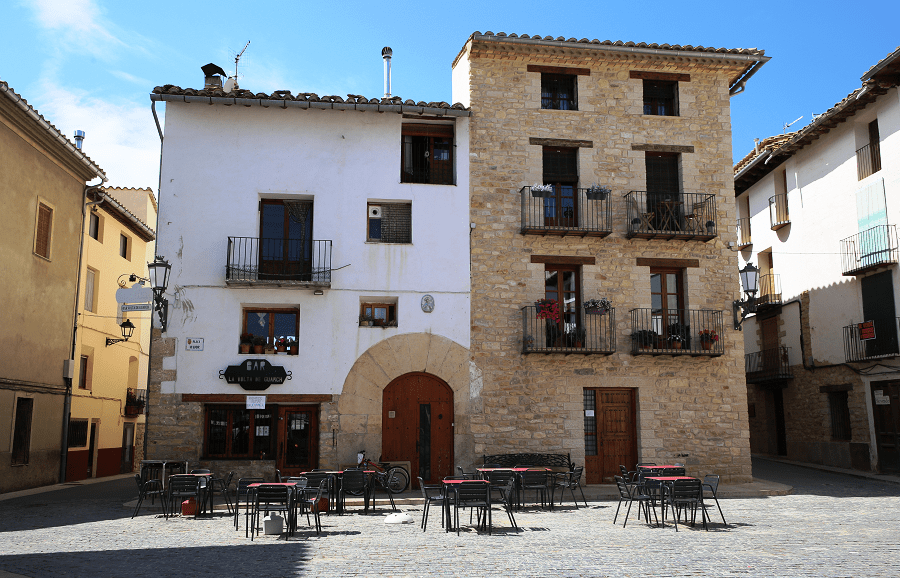Forcall is a municipality in the Valencian Community, Spain. Belonging to the province of Castellón, in the region of Los Puertos de Morella.
Tourism and main attractions
Hermitage of the Virgin of Consolation. Building of architectural interest.
Parish Church. It is from eighth century, although the primitive 13th-century Gothic church was destroyed. It preserves beautiful elements of the old building, such as the apse, some large windows, gargoyles and a magnificent rose window. Inside, the frescoes by Juan Francisco Cruella are very interesting, dedicated to the head of the parish Ntra. Sra. De la Asunción. Among the sobriety of the exterior complex, the 55 m baroque bell tower stands out.
Main Square (16th century). The most significant of Forcall. An interesting monumental complex, both for its dimensions and for its arcaded structure formed by semicircular arches and its palace houses, among which the Casa de la Vila, an old almudín and the current City Hall, an original building (16th century) stand out. In its façade there is a double cantilevered staircase, over a semicircular arch, unique in the Valencian Community, and which houses on its ground floor the old Church of San Miguel (15th century) and the current Mesón de la Vila.
Osset-Miró Palace (16th century) with an artistic carving eaves, doors and interior craftsmanship.
The Casa-Palacio de los Miró is a palatial residence belonging to the Miró family dating from the 16th century. It is located in the center of the town, specifically in Carrer del Carmen 5. It is classified as an Asset of Local Relevance, according to the General Directorate of Artistic Heritage of the Generalitat Valenciana.
In addition, it is necessary to highlight the existence of the remains of farmhouses, geographically dispersed throughout the municipal term, which were abandoned, leaving part of their constructions, such as the tower that they raised for the surveillance and protection of the farmhouse, of considerable artistic importance and currently they are classified as Asset of Cultural Interest, as is the case of the Torre de Dionisio.
Also interesting are the manor houses of the Fort, Maçaners, Berga, as well as the Forn de la Vila (13th century), the oldest operating oven in Europe, and the complex of San José and El Calvario, the most monumental in the city.
How to get to?
From Valencia 2 hr 13 min (171 km) via CV-15
From Castellón de la Plana 1 hr 31 min (102 km) via CV-15
From Madrid 5 hr 22 min (457 km) via A-2
Main information
Area: 39 sq. km
GPS coordinates: 40°38′46″N 0°11′58″W
Language: Spanish
Population: 456
Currency: Euro
Visa: Schengen
Time: Central European UTC +1, in summer +2

















